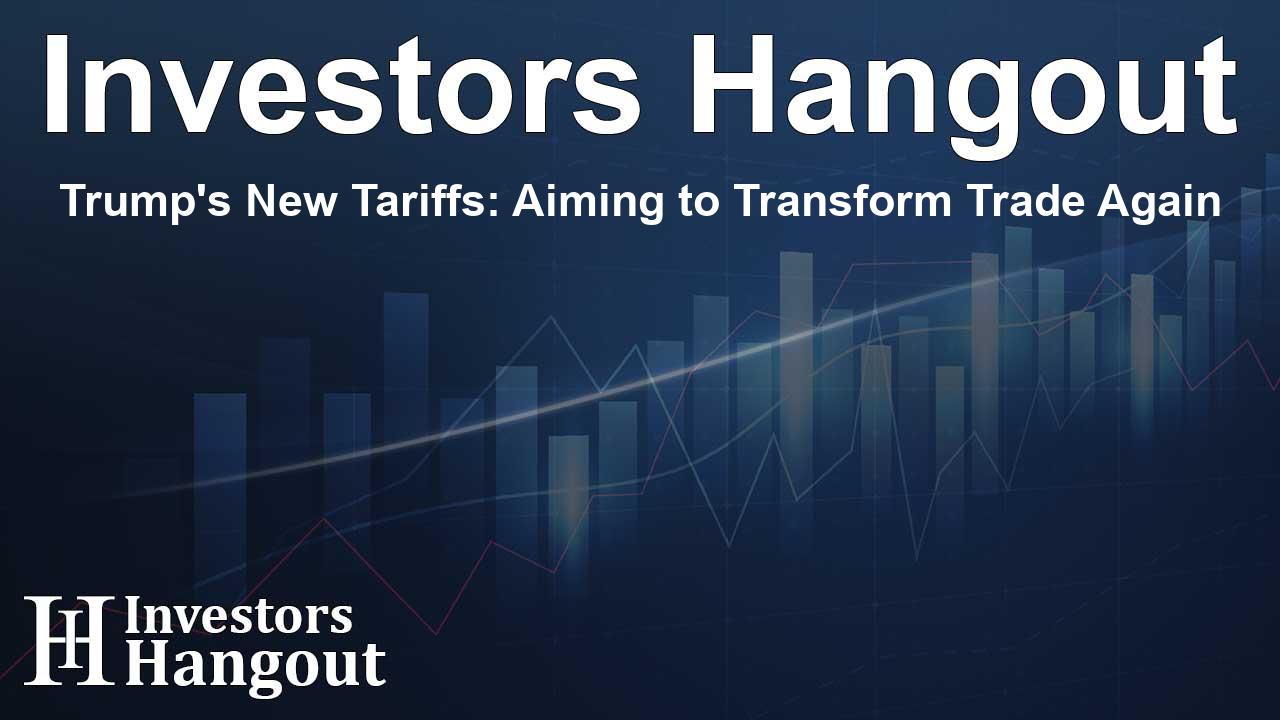Trump's New Tariffs: Aiming to Transform Trade Again

Trump's Ambitious Tariff Plans for Trade Reform
In his new chapter in Washington, Donald Trump is gearing up for an ambitious assault on trade practices. Eight years ago, he promised to overhaul U.S. trade relations and reduce the growing goods trade deficit while invigorating America's industrial scene through fresh tariffs. Now, as he steps into a potential second term, he’s set to implement what he calls a more rigorous strategy—introducing a blanket 10% tariff on all imports and a staggering 60% tariff specifically on goods arriving from China.
The Unfolding Impact of Trump's Tariffs
Though the exact results of these tariffs remain uncertain, historical data from Trump's previous term highlight significant shifts in U.S. import dynamics. His policies redirected trade, pushing American importers to seek alternatives to Chinese goods, notably from countries like Mexico and Vietnam. Despite these shifts, the U.S. trade deficit witnessed an upsurge, surpassing $1 trillion over the last four years, while factory jobs stagnated amidst a broader job recovery post-pandemic.
Steel and Aluminum Industries: Beneficiaries of Tariff Policies
Among the industrial sectors, steel producers were among the biggest winners from Trump's trade initiatives. Initially, they were awarded a 25% global tariff, with aluminum producers receiving a 10% duty on their imports. However, these advantages were somewhat mitigated after negotiation deals struck by both Trump and the subsequent Biden administration, which included quota arrangements with Canada, Mexico, and several European countries.
Challenges in the Industry
Despite the initial surge in their sectors, many steel plants, including a notable U.S. Steel facility in Granite City, Illinois, eventually faced closures, unable to maintain their operations as market conditions fluctuated. Moreover, some aluminum smelting facilities exemplified similar struggles, leading to diminishing job opportunities despite the early promise that tariffs brought.
Political and Economic Repercussions of Tariff Implementation
Trump’s first term marked a significant departure from previous bipartisan support for lower trade barriers. This transformation raised awareness of the risks posed by China's market dominance and reshaped major trading agreements, including a revised North American trade agreement. Former trade adviser Kelly Ann Shaw acknowledged this shift, stating that it prompted a nationwide dialogue about which industries should remain vital, what supply chains were essential, and how American trading relations should be structured moving forward.
Realignment of Trade Dynamics
During Trump’s earlier administration, the tariffs on $370 billion worth of Chinese imports significantly reduced the trade deficit with China from $418 billion in 2018 to $279 billion by 2023. Yet, as manufacturers moved their operations elsewhere, Mexico and Vietnam rose to prominence as new import sources, offsetting China’s declining exports.
Retaliation and the Broader Economic Landscape
The trade landscape is further complicated by China's retaliatory measures against U.S. exports, specifically targeting soybeans and aircraft purchases, which had repercussions for American companies like Boeing. Trade negotiations and treaties often resulted in limited success as seen in the “Phase 1” trade deal, where China's promised purchases of U.S. goods fell short, especially as the pandemic hampered global logistics and trade.
Long-term Effects of Tariff Policies
Despite Trump's earlier tariffs not sparking significant inflation, their potential impact looms large over market dynamics. Increased tariffs could lead to higher consumer prices and a reevaluation of supply line dependencies, particularly in technology and electronics—sectors where the U.S. heavily relies on Chinese imports. Additionally, the prospect of burdensome tariffs raises concerns for companies that rely on cost-effective sourcing from China, endangering ongoing operations and profitability.
Future Plans for Tariff Revenue and Economic Strategies
Trump aims to utilize revenues from tariffs to address U.S. debt, proposing an entirely new government agency dedicated to tax collection from foreign revenues. Existing collections from tariffs appear minimal against the vast backdrop of national deficits approaching $2 trillion annually. The Tax Foundation estimates that a broader tariff initiative could generate significant revenue over ten years, albeit at a cost to economic growth.
Frequently Asked Questions
What are Trump's new tariff plans?
Donald Trump plans to impose a 10% tariff on all imports and 60% on goods from China as part of his trade reform strategy.
How did Trump's tariffs impact U.S. trade?
Trump's tariffs shifted U.S. imports from China towards countries like Mexico and Vietnam, yet overall trade deficits continued to rise.
Which industry saw the most benefit from Trump's tariffs?
The steel industry benefited significantly, with tariffs providing a boost to production and sales in domestic markets.
Did Trump's tariffs lead to an increase in consumer prices?
Initial tariffs did not cause significant consumer price inflation, though potential increases loom if new tariffs are implemented.
What was the economic implication of the 'Phase 1' trade deal?
Although China promised increased purchases of U.S. goods, the pandemic hindered these commitments, leading to missed targets for trade growth.
About The Author
Contact Evelyn Baker privately here. Or send an email with ATTN: Evelyn Baker as the subject to contact@investorshangout.com.
About Investors Hangout
Investors Hangout is a leading online stock forum for financial discussion and learning, offering a wide range of free tools and resources. It draws in traders of all levels, who exchange market knowledge, investigate trading tactics, and keep an eye on industry developments in real time. Featuring financial articles, stock message boards, quotes, charts, company profiles, and live news updates. Through cooperative learning and a wealth of informational resources, it helps users from novices creating their first portfolios to experts honing their techniques. Join Investors Hangout today: https://investorshangout.com/
The content of this article is based on factual, publicly available information and does not represent legal, financial, or investment advice. Investors Hangout does not offer financial advice, and the author is not a licensed financial advisor. Consult a qualified advisor before making any financial or investment decisions based on this article. This article should not be considered advice to purchase, sell, or hold any securities or other investments. If any of the material provided here is inaccurate, please contact us for corrections.
